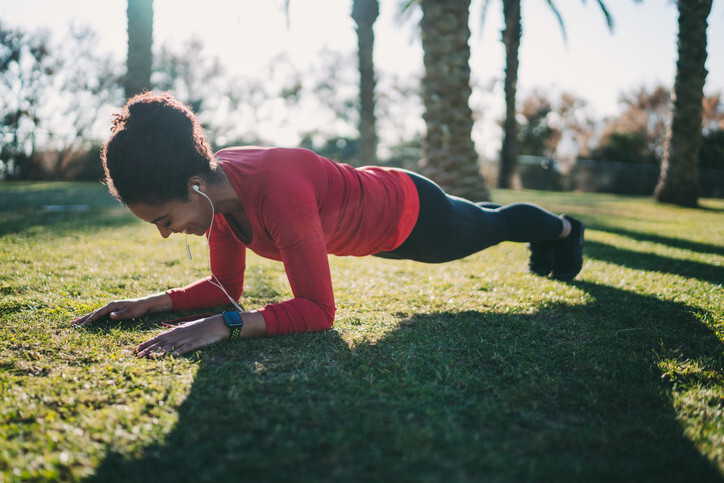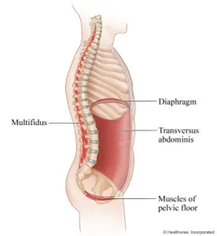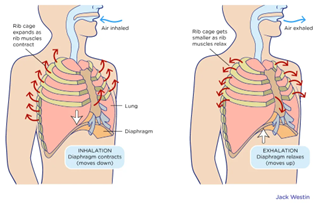Breathing, Core, and Posture: Why You Should Integrate All Three

In the world of health and wellness, we often hear the terms breathwork, core stability, and posture tossed around. These concepts are often trained separately, which can initially be necessary to help an individual develop awareness and understanding of their breathing patterns, core activation, and postural habits. In actuality, however, all three are crucially interconnected and directly influence one another. Therefore, it is essential to eventually integrate all three during exercise training and everyday activities to maintain optimal function.
Before delving into how or why all three are interrelated, it’s important to establish what is happening when we breathe and activate the core, and why posture matters. When we take a breath in, our respiratory muscles (mainly the diaphragm and muscles between our ribs) contract and cause the ribcage to expand. This creates a negative, vacuum-like pressure in the chest cavity, which draws air into the lungs. Exhalation occurs when the respiratory muscles relax, causing the ribcage to recoil. This increases the pressure in the chest cavity, which in turn “pushes” the air out.

Most people have probably heard of “the core” and its role in spinal stability, but some may not exactly know what composes the core and how it contributes to stability. The core is comprised of several muscles involving the abdominals, multifidi (deep back muscles), diaphragm, and pelvic floor. These muscles surround our abdominal cavity and work together to control the pressure within. This intraabdominal pressure aids in spinal stability by maintaining an optimal level of stiffness around the spine to minimize excess compression on the discs, help maintain a particular spinal position, and to allow for controlled spinal mobility.
The term posture refers to the static or dynamic position of the body in three-dimensional space. Our body’s position is consciously and unconsciously influenced by several factors, including our environment, the task at hand, the state of our nervous and musculoskeletal systems, and our psycho-emotional status. The purpose of a given posture is to allow us to successfully and safely perform a specific activity while counteracting the downward force of gravity. While a particular movement or activity can be accomplished via a variety of postures, certain body positions and mechanics are more ideal because they perform a task with less energy expenditure and stress on the muscles and joints.
 This goal of efficiency is why it’s important to combine one’s awareness of breathing, core activation, and postural alignment during exercise and daily activities. All three are intimately related in that you can’t optimally perform one without addressing the other two. As previously mentioned, breathing and core activation are driven by muscles. To perform their roles efficiently, muscles need to be in their optimal length, which is affected by the positioning of their attachment points (specifically the spine, ribcage, and pelvis for our respiratory and core muscles). Thus, how we stand or sit can affect our ability to engage the core and alter our breathing pattern. Another example of this interconnectedness lies in the diaphram’s role as both our primary respiratory muscle and the “top” of our core muscle group. Since the diaphragm is involved in both ribcage mobility and core stabilization, dysfunction of this muscle typically corresponds with postural presentations of ribcage elevation, hunched shoulder girdles, and difficulty stabilizing the pelvis in neutral. Therefore, we can’t perform core training without addressing our breathing pattern and the alignment of our ribcage, spine, and pelvis is a crucial factor in enabling those muscles to function at their best.
This goal of efficiency is why it’s important to combine one’s awareness of breathing, core activation, and postural alignment during exercise and daily activities. All three are intimately related in that you can’t optimally perform one without addressing the other two. As previously mentioned, breathing and core activation are driven by muscles. To perform their roles efficiently, muscles need to be in their optimal length, which is affected by the positioning of their attachment points (specifically the spine, ribcage, and pelvis for our respiratory and core muscles). Thus, how we stand or sit can affect our ability to engage the core and alter our breathing pattern. Another example of this interconnectedness lies in the diaphram’s role as both our primary respiratory muscle and the “top” of our core muscle group. Since the diaphragm is involved in both ribcage mobility and core stabilization, dysfunction of this muscle typically corresponds with postural presentations of ribcage elevation, hunched shoulder girdles, and difficulty stabilizing the pelvis in neutral. Therefore, we can’t perform core training without addressing our breathing pattern and the alignment of our ribcage, spine, and pelvis is a crucial factor in enabling those muscles to function at their best.
It is impossible to be aware of our breathing, core engagement, and posture at all times and we shouldn’t have to be so vigilant about our body. Be rest assured, however, that every little bit counts and is beneficial. As much as you can, incorporate moments throughout the day where you take note of your posture and breathing…Are you slouching and taking shallow breaths? Perform a few long exhalations…can you feel your core engage? Before lifting something heavy, be aware of your body mechanics, actively engage your core and exhale on the effort. When performing planks, be aware that the relative positioning of your ribcage to your pelvis is going to affect your core stabilization and you should be holding the plank, not your breath.
To be clear, there is no “perfect posture” to be in at all times and, as I discussed in a previous blog, it’s more important to maintain our ability to change positions. Therefore, the ultimate purpose of integrating breathing, core activation, and awareness of our alignment is to create a solid foundation in our bodies to facilitate efficient and varied movement. The benefit of this efficiency? Less stress on our joints and muscles and a resilient body!


